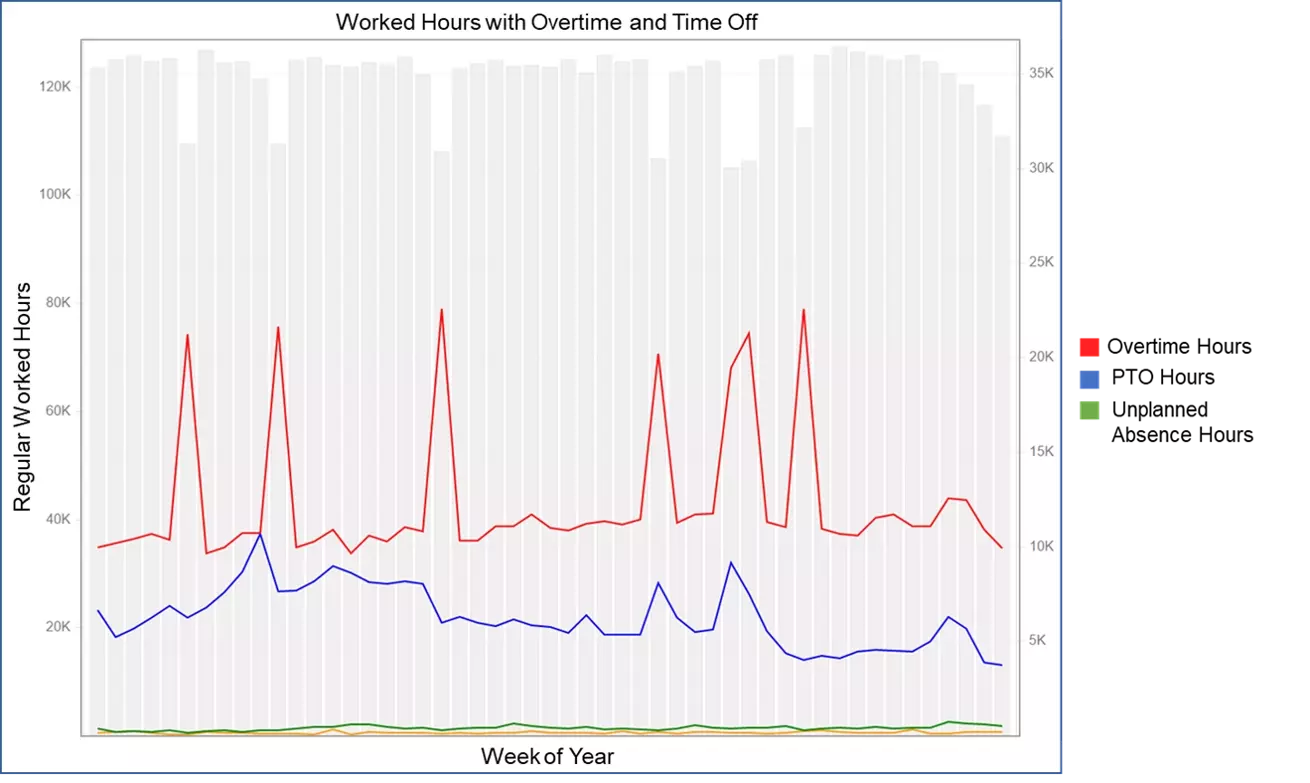The status quo just doesn’t cut it.
In today's environment, many government agencies have continued to maintain a semi-automated time and attendance system, using tools such as excel, access, or a home-grown program built by their IT dept. In some cases, organizations are still using paper timesheets. While these types of programs have worked for years, changes in compliance regulations, audit findings, lawsuits, the shift to a mobile workforce, and efficiency savings are increasing the importance of considering new ways for tracking time. Let’s face it - we are expected to do more with less.
Workforce management can impact a government’s personnel services budget, which in turn impacts the ability to meet community needs. Of all the activities a government agency must juggle to maintain a productive and effective operation, making informed decisions around their most valuable assets, their employees, continues to be at the top of the list.
A lack of standardization and the inability of the workforce to stay connected and remain productive prohibits government agencies from effectively managing their personnel. Keeping the workforce engaged and reducing labor costs while improving productivity, efficiency, and technical capability has never been more critical.
Taking a closer look at your organization’s data can provide insights that you didn’t think you’d find. Here are two examples that our team helped bring to light to large state agencies.
Planning for Overtime?
You know absence management is important. Below, you can see a graph that shows regular hours worked (grey bars), overtime (red), planned absences (blue), and unplanned absences (green, on the bottom).
Unplanned absences were consistent on the bottom, but what surprised this organization was that their huge overtime spikes correlated with time of high planned absences. Having this visibility made the solution simple. The organization can now plan for approved absences and adjust scheduling during these peaks to avoid these large overtime spikes.

It's The Little Things
This next example is of a large 20,000+ person state agency. They knew they had missed punches but didn’t expect that almost 40% of their employees missed punches within the last year. We helped find a total of 1,900,000 missed punches, which at two minutes per-fix, may have added up to 65,800 hours of additional labor costs. A conservative estimate determines this added up to over $1,000,000 a year fixing missed punches. Automation and customizable punch rules are things that can help eliminate issues related to missed punches.

A Kronos value assessment analyzes your data to offer insight into your workforce management process and pay practices, as well as offers a strategic perspective on how small changes can save time, effort, and money, allowing your agency to better focus on its mission.
In many cases, what appears to be an area of concern may be masked by misperceptions. Diving into your workforce data can reveal insights that might be surprising, such as discovering the department with the highest overtime numbers is not necessarily the area of highest concern. Proper analysis of an organization’s data allows them to ask the right questions and identify areas where improvement and cost savings can be made. Additionally, it can help answer valuable questions such as:
- Do we need to hire more staff, or can we use the staff we have and leverage strategic scheduling tactics?
- Do we have an issue with absenteeism?
- How much are these missed punches costing us?
Why now?
Doing nothing to address and answer these questions is costing governments thousands, and in some cases, millions of dollars each year. Now, more than ever, it is important to consider making changes. Gaining a full picture of the workforce and digging into the outliers is the first step. With a free value assessment, you will be empowered with the confidence to make decisions about what is right for your organization.



